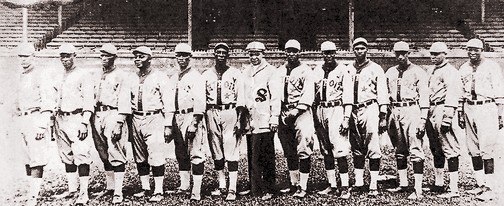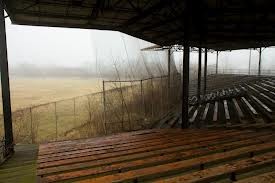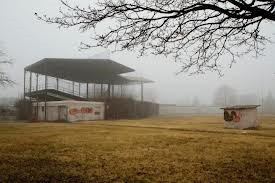Mack Park
Introduction
Text-to-speech Audio
Images
The Detroit Stars.

Stadium seating.

Mack Park after fire.

Backstory and Context
Text-to-speech Audio
In 1918, Rube Foster–a promoter of Black sports– knew that the migration of African Americans to northern cities meant that Black baseball might be successful if it were organized and promoted. He then established the Negro National League with hopes of creating franchises in cities with large Black populations. Negro teams had played baseball since the late 19th century, often challenging white teams, including those in the major leagues.
In an effort to increase money in Detroit Foster wanted rights to Mack Park which was the original home of Detroit’s Negro National League baseball franchise, the Detroit Stars. Mack Park was desired because it was the only venue that offered enough seating. Mack Park had enough seating for 6,000 between both bleacher and theatre style seating, however, various reports state that it could hold up to 10,000 people. Foster appointed John T. Blount as head of the Detroit Stars team, which prospered, playing league games on weekends and challenging local teams at other times. Roesink replaced Blount as the president of the Stars, making him the third white man to own a Negro League franchise.
In 1929, the Detroit Stars were scheduled to play the Kansas City Monarchs at Mack Park; however, a week of rain had made the field unplayable. Before the game, Roesink along with the ground crew spread gasoline on the field in an effort to dry it out so that the game could be played. The extra gasoline stored underneath the stands was ignited when a cigarette was thrown down on the field. A fire quickly started and spread through the stadium. No fans were killed, but 220 people were reportedly injured when the grandstand collapsed. The fire ended the use of Mack Park by Negro League baseball teams. The Detroit Stars finished out their season at Hamtramck Stadium then proceeded to play their last season at Dequindre Park in Detroit.
Mack Park was eventually rebuilt for the use of Detroit’s Southeastern High School’s baseball team. This continued until the 1960s when Mack Park was flattened to make way for a housing complex called Fairview Homes.
Cite This Entry
Admin, Clio and Stephanie Shaffer. "Mack Park." Clio: Your Guide to History. March 11, 2015. Accessed April 29, 2025. https://theclio.com/tour/465/9

